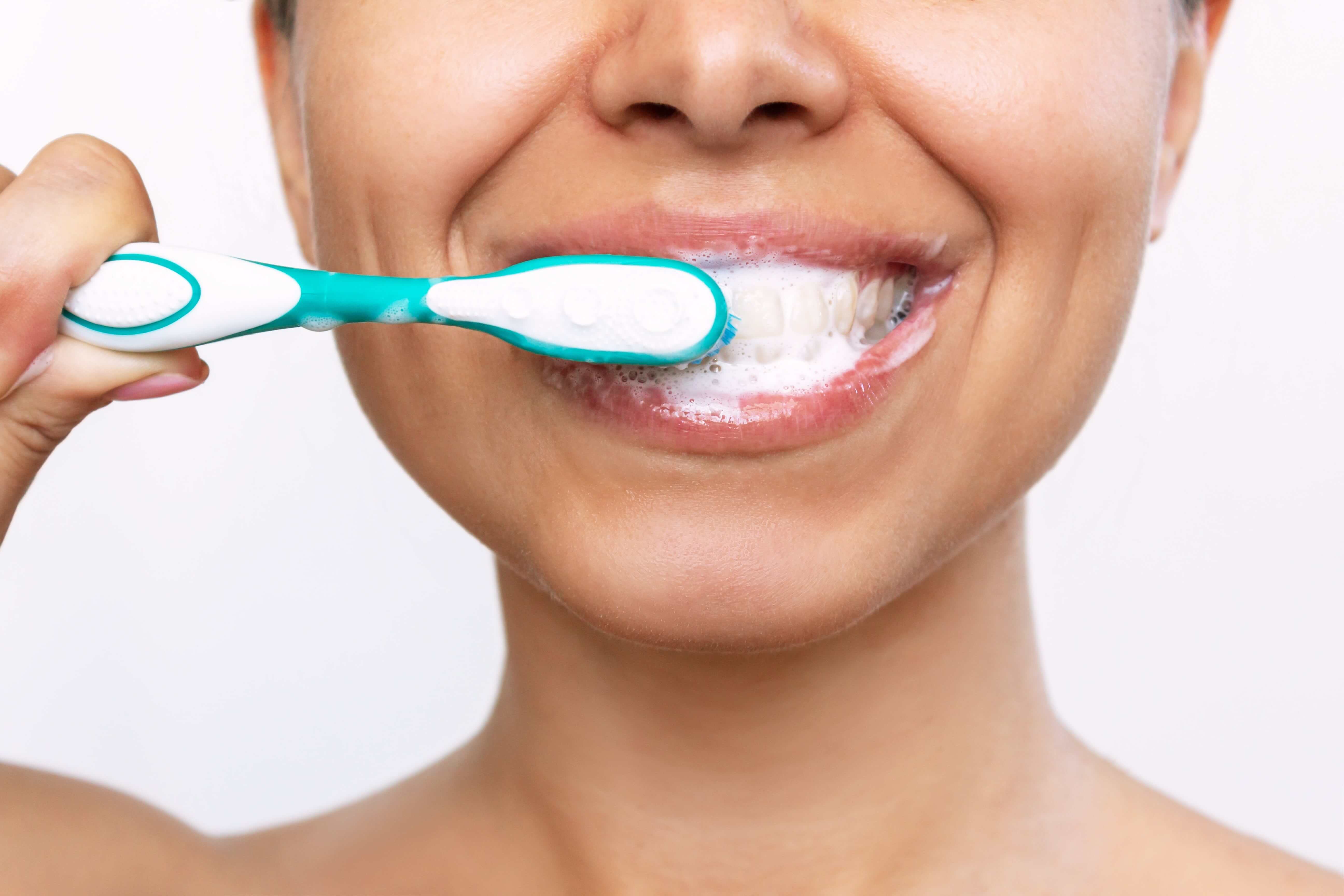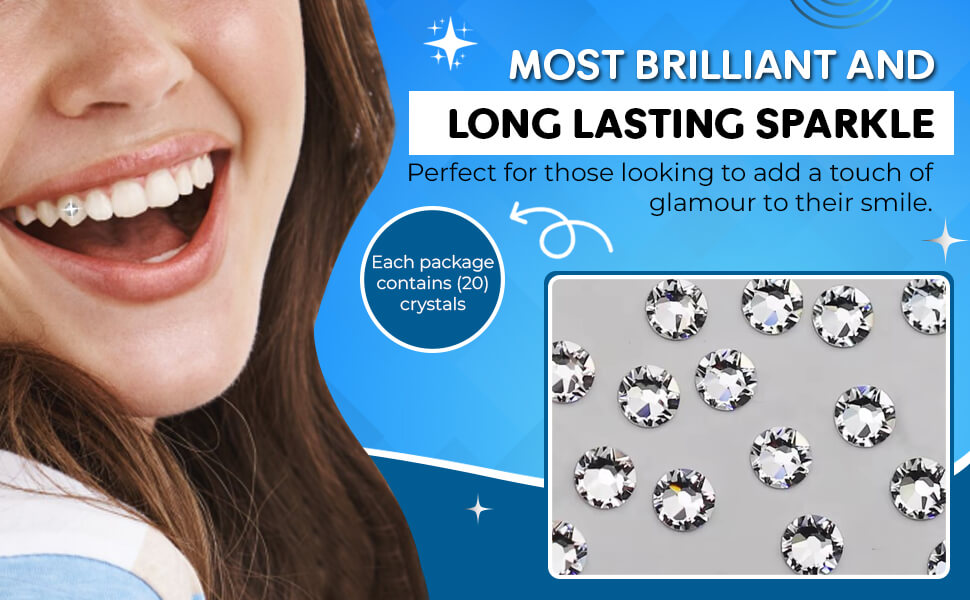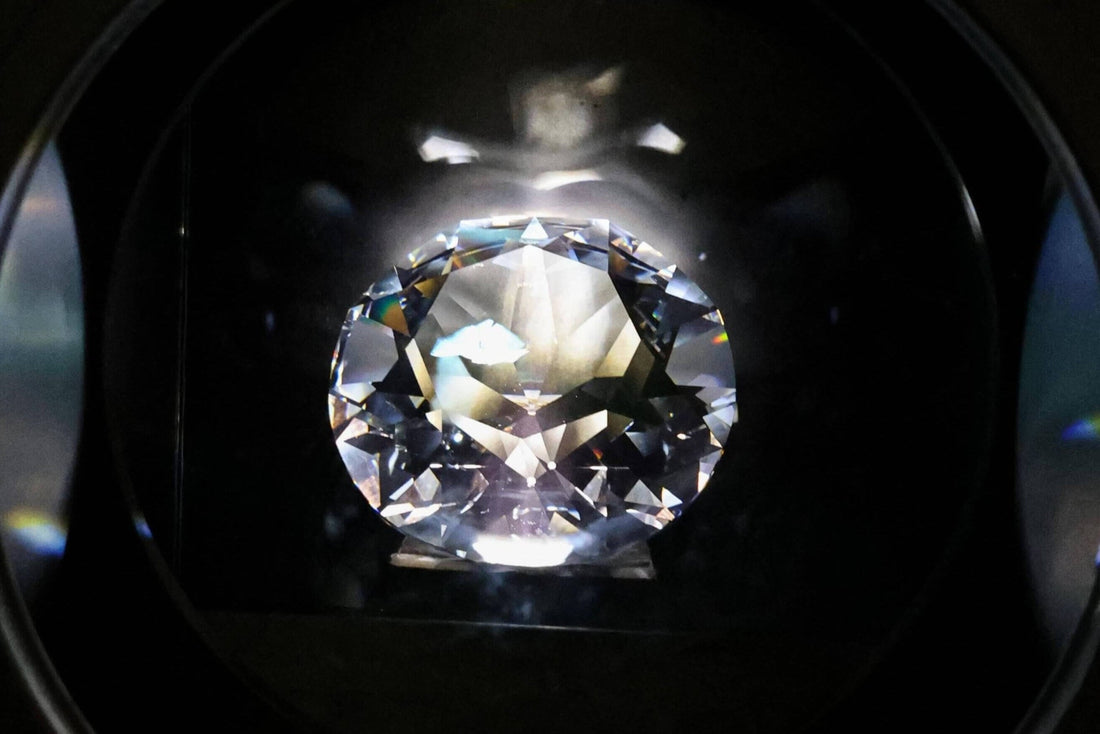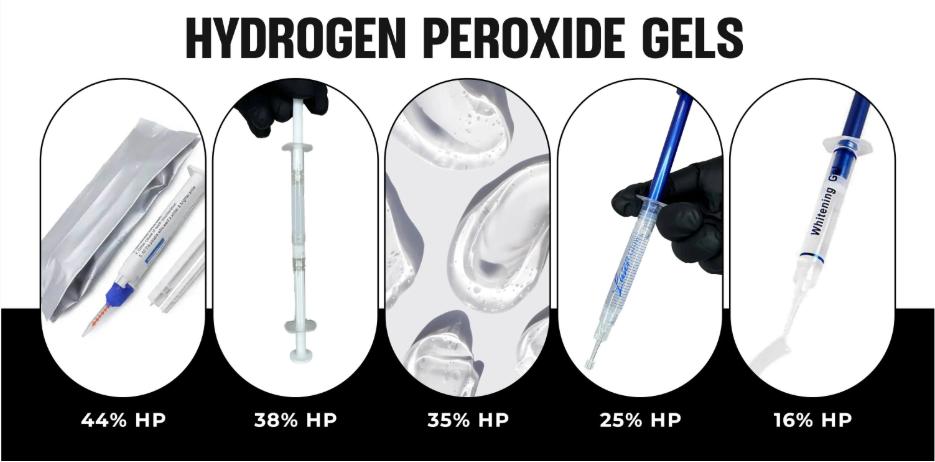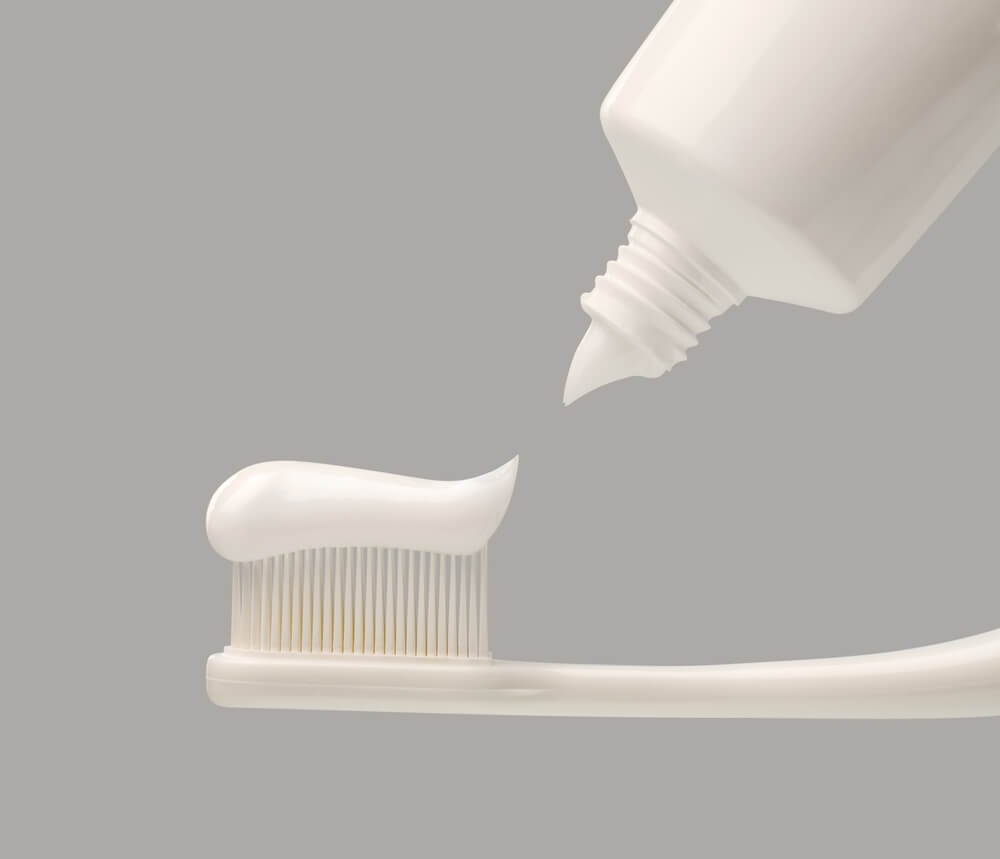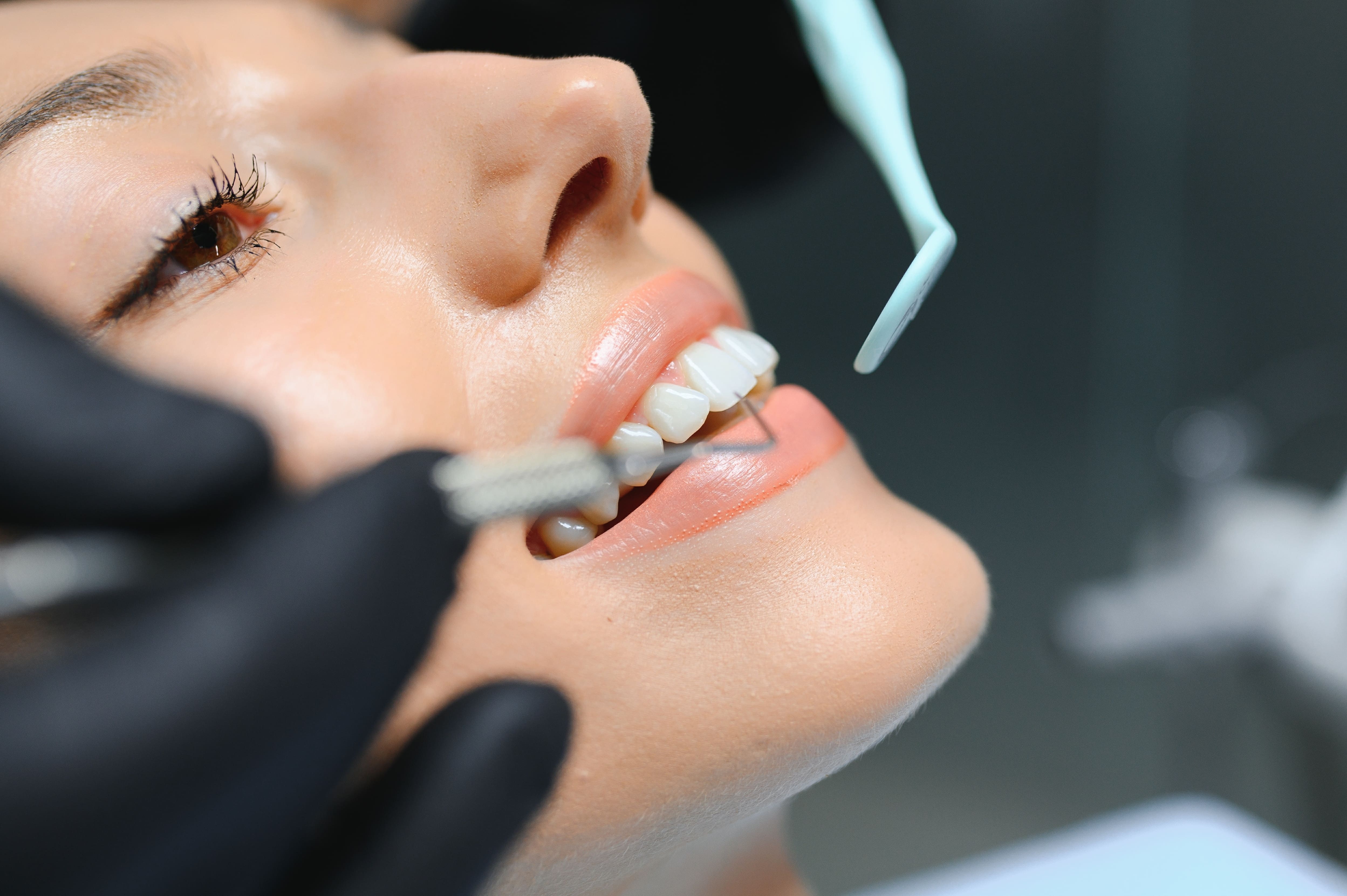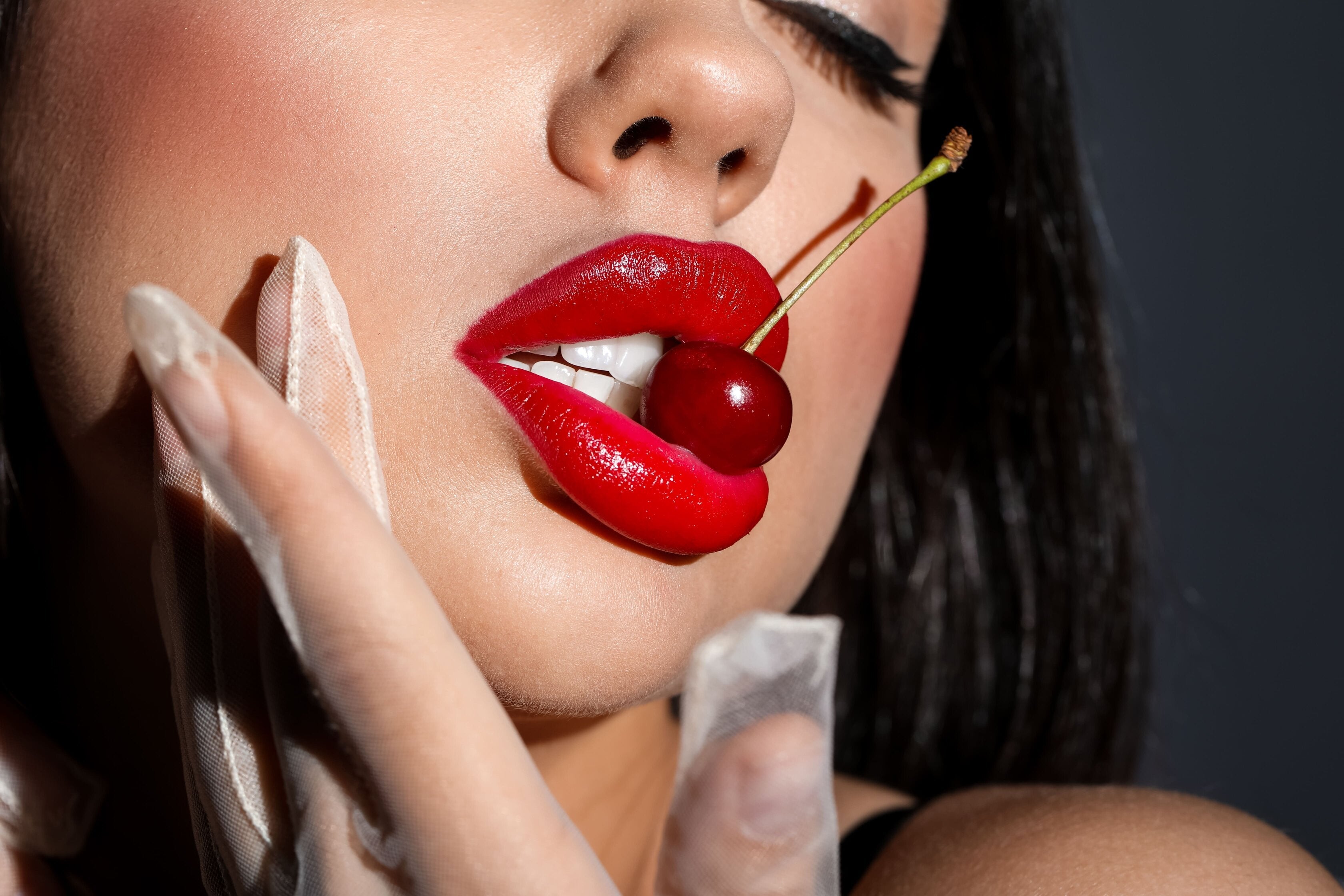Keeping your smile bright is a common goal – but what if you’re undergoing orthodontic treatment or already have dental work like crowns or veneers? Many people wonder “Can you whiten teeth with braces, crowns, or veneers?” The good news is that there are ways to safely improve or maintain your teeth’s whiteness in these situations. However, the approach will differ depending on whether you have braces on your teeth, or permanent restorations such as crowns (caps) or veneers on some teeth.
In this comprehensive guide, we’ll answer all your questions about whitening teeth with braces, crowns, or veneers. You’ll learn why traditional whitening might not work the same on dental appliances or restorations, and how to brighten your smile effectively without causing damage. We’ll also highlight LaserGlow’s recommended products – including a Purple Toothpaste color corrector, a PAP+ teeth whitening powder, and an oxygen-infused whitening foam for aligners – which can help you achieve or maintain a whiter smile, even if you have braces or dental work. Let’s dive in!
Whitening Teeth with Braces: What Are Your Options?
Braces are fantastic for straightening teeth, but they can pose challenges for teeth whitening. Whether you have traditional metal braces on the front of your teeth or modern clear aligners (like Invisalign®), here’s what you need to know:
- Traditional Exterior Braces (Metal or Ceramic Brackets): If you have brackets and wires on the front of your teeth, whitening becomes tricky. Whitening agents (like strips or gels) cannot reach the enamel under the brackets, so only the exposed parts of teeth will whitenhealthline.com. This means if you bleach your teeth while the braces are on, you risk ending up with “two-toned” teeth – the area under each bracket could remain darker, leaving visible squares once braces come offhealthline.com. For this reason, dentists often advise waiting until after your braces are removed for any intensive whitening treatmentshealthline.com. By waiting, you ensure the entire tooth surface can be evenly whitened for uniform results.
- Lingual Braces: Lingual braces are attached to the back side of your teeth. With these, your front tooth surfaces are bracket-free, so you could use whitening strips on the fronts. However, trays or gel might not fit perfectly due to the hardware on the backhealthline.com. Still, because the visible front is unobstructed, whitening is more feasible than with regular braces. Many patients with lingual braces choose to do periodic whitening or simply maintain good hygiene and do a full whitening after treatment.
- Clear Aligners (Invisalign and similar removable braces): If you’re wearing clear plastic aligner trays, you’re in luck – you can whiten your teeth while straightening them quite easily! In fact, aligners can double as whitening trayshealthline.com. You can apply whitening gel or foam inside the aligners and wear them as usual, allowing the bleaching agent to contact your teeth during your daily wear time. Because aligners cover the whole tooth, the whitening will be fairly uniform. Many orthodontic patients love this “kill two birds with one stone” approach: by the end of your aligner treatment (often about a year), your teeth can be straighter and whiter simultaneously.
How to Whiten Your Teeth During Braces Treatment
While major bleaching might be best saved for after braces (especially with traditional brackets), you don’t have to settle for a dull smile during orthodontic treatment. Keeping your teeth clean and minimizing stains will help ensure you unveil a bright, beautiful smile when the braces come off. Here are some safe whitening options and tips for braces-wearers:
- Meticulous Oral Hygiene: This is step one. Braces can trap food and plaque around brackets, leading to staining or even permanent marks on enamel. Brush after every meal if possible, and floss daily (using floss threaders or special orthodontic floss picks to get under wires). Excellent hygiene prevents the buildup of yellowish plaque that makes teeth look dull. Remember, plaque and debris are stain magnets – keeping your teeth clean will naturally keep them whiter.
- Orthodontic-Friendly Whitening Toothpaste: Whitening toothpastes do not deeply bleach teeth, but they contain polishing agents or gentle chemicals to lift surface stains. They are safe to use with braces because they clean the exposed enamel without risking uneven bleaching under brackets. Use a whitening toothpaste two to three times a day to slowly brighten your smile by scrubbing away recent stains. Tip: Avoid overly abrasive toothpaste that could scratch enamel or damage the edges of your braces; choose one labeled enamel-safe.
- Purple Color-Correcting Toothpaste: A purple-tinted toothpaste is a clever hack to make teeth look whiter instantly, and it’s completely safe to use with braces. How does it work? It applies the principles of color theory: purple is opposite yellow on the color wheel, so purple pigments can neutralize yellow tones on your teeth’s surface. For example, LaserGlow Purple Toothpaste Color Corrector deposits special violet pigments that counteract yellow or brownish hues, giving an immediate optical brightening effect. It won’t bleach your teeth whiter (the effect is temporary and washes away), but it’s fantastic as a cosmetic fix: after brushing, your teeth appear less yellow. This is perfect when you have braces and want a quick boost without risking uneven bleaching. Plus, LaserGlow’s purple toothpaste is peroxide-free and enamel-safe, so you can use it daily without concern.
- Electric Toothbrush for Stain Removal: Consider using an electric toothbrush to maximize your cleaning power. Electric brushes (especially those with oscillating or sonic technology) remove plaque and surface stains more effectively than manual brushing. Many brands have special brush heads designed for braces that can get into crevices. By keeping your teeth plaque-free and polished, you’ll naturally maintain a whiter look even with braces on.
- Avoid Stain-Causing Foods and Drinks: While wearing braces, try to minimize consumption of things that easily stain teeth – like coffee, tea, red wine, curry, berries, or cola. When you do enjoy them, rinse your mouth with water afterward to prevent pigments from sitting on your teeth. This simple habit prevents a lot of discoloration. Similarly, avoid tobacco use (smoking or vaping), which can rapidly yellow teeth and braces elastics. By cutting down on staining substances, you make it easier to keep your smile bright.
- Whitening Strips or Gel (Only with Clear Aligners or Maybe Lingual Braces): If you have removable aligners or braces on the inner side of teeth, you can use normal at-home whitening kits (strips, paint-on gels, or custom trays) because the fronts of your teeth are accessible. With Invisalign® or clear trays, you can even use the trays themselves with a whitening gel. LaserGlow’s Oxygen Infused Whitening Foam is ideal here – it’s a foam toothpaste with 6% hydrogen peroxide formulated to be placed in your aligner trays. You simply pump the minty foam into your aligners and wear them as usual. The foam not only cleans and freshens your aligners, but also whitens your teeth gently over time. Since aligners are typically worn 20+ hours a day, this foam provides prolonged whitening contact safely at a low concentration. Gradual whitening during the months of your treatment means you’ll reveal a dramatically improved smile at the end – straight and beautifully bright. (Note: Whitening gels or foam should not be used with traditional bracket braces, only with clear removable aligners or possibly lingual braces as per your orthodontist’s advice. As Healthline reports, whitening strips or trays aren’t effective with metal braces and will lead to uneven coloration.)
- In-Office Whitening (for special cases): Generally, orthodontists and dentists will delay any in-office professional whitening until braces are off (because their powerful bleaches can’t reach covered enamel). The exception is if you have aligners or lingual braces – then a dentist could perform whitening on your visible tooth surfaces if desired. Always consult your dentist/orthodontist; but for most metal brace wearers, it’s best to wait. In the meantime, focus on the above methods to keep teeth as white as possible.
Bottom Line for Braces: You can do some whitening with braces, but manage expectations. With traditional braces, limit whitening efforts to good hygiene and non-bleaching products (whitening toothpaste or purple color-corrector) to avoid uneven results. With clear aligners, take advantage of whitening foams or gels in your trays to steadily brighten your teeth throughout treatment. Always avoid any method that could bleach only parts of your teeth. If you’re patient and keep your teeth clean, you’ll be rewarded with a gorgeous, evenly white smile once the braces come off. And if you need a little boost in the meantime, tools like an electric toothbrush, purple whitening toothpaste, or a gentle PAP+ whitening powder can safely keep stains at bay.
Can You Whiten Teeth if You Have Crowns or Veneers?
Now let’s talk about dental crowns and veneers. These restorations are different from braces – they’re permanent (or semi-permanent) parts of your teeth, and they’re made of materials like porcelain or composite resin. Many people get crowns or veneers to improve the appearance of their teeth, often resulting in a whiter, more perfect smile. But what if, over time, your surrounding natural teeth change color or the restorations lose their luster? Can whitening treatments make crowns or veneers whiter?
The short answer:
- Whitening treatments will not lighten the intrinsic color of crowns or veneers beyond the shade they were originally made. In other words, you cannot bleach a crown or veneer to a lighter shade the way you can with natural tooth enamel. This holds true whether the restoration is porcelain, ceramic, or composite resin – these materials are not porous like enamel, so the peroxide or other whitening agents can’t penetrate and brighten them internallycolgate.com. According to the American Dental Association, whitening products simply don’t work on these restoration materialscolgate.com.
- However, you can remove surface stains from crowns or veneers. Over the years, things like coffee, tea, red wine, or smoking might deposit a slight stain film on the very surface of a porcelain or composite restoration (especially at the margins). While the deep color of the crown/veneer won’t change, a good cleaning or polishing can lift external stains and restore the restoration’s original brightness. Often, what people perceive as a crown “yellowing” is just it collecting surface stains that the natural enamel next to it also picks up. Whitening products may help clean off these superficial stains on restorations, making them look a bit brighter – but they are returning the crown or veneer to its initial color, not beyond that.
Given those facts, here are some important guidelines if you have crowns or veneers and want a whiter smile:
Whitening Planning if You Expect Crowns/Veneers
- Whiten First, then Match: If you know you’ll need a crown or want veneers on some teeth, it’s wise to whiten your natural teeth before getting the restoration placedcolgate.com. Dentists can then fabricate your crown/veneer to match the shade of your newly whitened natural teethcolgate.com. Since the crown’s color won’t change later, this ensures a good long-term match. For example, if you whiten to a nice bright shade and then get a porcelain veneer, that veneer will be made in that bright shade. Your natural teeth may slowly re-stain over time, but you can touch them up with whitening and they’ll whiten again – whereas the veneer will stay the original bright shade (only needing polishing of stains). This approach avoids the scenario of a dark crown in a mouth of white teeth.
- Existing Crowns/Veneers Won’t Whiten Lighter: If you already have crowns or veneers that look darker than you’d like, using whitening gels or strips on them won’t make them magically lighter than their current color. You could whiten all your surrounding natural teeth, but the crown or veneer will remain at its baseline color. In fact, whitening the other teeth might make the mismatch more obvious if the crown was darker – so be cautious. In cases where a crown or veneer is significantly darker or more yellow than the desired shade, the solution might be to replace it with a new one in a lighter color (after whitening the natural teeth to match). Always consult your dentist for the best approach if you’re unhappy with the color of a restoration.
How to Maintain a White Smile with Crowns or Veneers
Just because you can’t bleach your veneers or crowns whiter doesn’t mean you can’t have a dazzling smile. You simply need to focus on whitening your natural teeth safely and keeping all teeth – natural or not – clean and stain-free. Here are some tips and product recommendations:
- Use Non-Abrasive Whitening Toothpaste: To avoid scratching porcelain or composite surfaces, choose a gentle, enamel-safe whitening toothpaste. These use mild abrasives or cleaners to remove surface stains without being too harsh. Brushing twice daily with a whitening or stain-removing toothpaste will help polish away the coffee/tea stains from both your natural teeth and any crowns/veneers, keeping them as bright as possible. Just make sure the toothpaste isn’t overly gritty (avoid charcoal pastes on porcelain, for example, unless specifically formulated to be safe on restorations).
- Incorporate a PAP+ Whitening Powder: A great innovation for those with mixed natural and restored teeth is PAP+ teeth whitening powder. This is a peroxide-free whitening booster you can add to your brushing routine. LaserGlow’s Mint PAP+ Whitening Powder contains Phthalimidoperoxycaproic Acid (PAP) which oxidizes and breaks down stain molecules without the risks of peroxide (no sensitivity, no damage to materials). PAP+ powder gently lifts everyday stains from teeth – it even has nano-hydroxyapatite to strengthen enamel while whitening. The key benefit for those with crowns or veneers is that PAP+ is safe on dental work: it won’t etch or weaken porcelain/composite, and can help polish off surface discoloration on those restorations as well. By using a PAP+ powder daily or a few times a week along with toothpaste, you’ll keep your natural teeth bright and also keep your crowns/veneers looking as clean as when you got them. (Just remember, it cleans stains – it won’t make the crown whiter than it originally was, but a stain-free crown looks its best.)
- Try a Purple Color Corrector on Restorations: Earlier we mentioned purple toothpaste for braces, but it can be a game-changer for cosmetic restorations too. If you have a veneer or crown that’s slightly more yellow or dull than you’d prefer, brushing with a purple color-correcting toothpaste can make all your teeth appear whiter by balancing out yellow tones. Since the effect is universal and temporary, it works on natural and fake teeth alike. For instance, brushing over a set of teeth that include a couple of veneers with LaserGlow’s Purple Toothpaste will leave a subtle violet filter that tricks the eye into seeing a whiter shade on every tooth. This is a fantastic quick fix before photos or events if you worry about a crown not matching perfectly – it’s like an Instagram filter for your smile, done in real life! And because it’s just topical, there’s no harm to the crown or your enamel.
- Professional Cleaning and Polishing: Make sure to keep up with regular dental cleanings. Your hygienist can use special polishing pastes and tools to buff away stains on crowns and veneers (and natural teeth) during your cleaning appointments. They can also assess if any of your restorations are accumulating tartar or stain and polish them carefully. Sometimes a professional polishing is all that’s needed to restore a porcelain veneer’s shine if it has become slightly dull. Aim for cleanings at least twice a year, or more frequently if your dentist recommends, especially if you’re a heavy coffee/tea drinker or smoker.
- Avoid Staining Habits: Just as with braces, limit the usual stain culprits to protect your investment in a white smile. Porcelain is more stain-resistant than natural enamel, but composite resin (often used in bonding or some veneers) can stain more readily. Either way, less exposure to dark pigments means less discoloration. Rinse your mouth or brush after consuming staining beverages. If you smoke, consider quitting or cutting back – nicotine stains can creep around the edges of crowns and veneers, requiring more maintenance. By treating your restorations with the same care (or better) as natural teeth, you’ll keep them looking bright for longer.
- Whiten the Rest of Your Teeth: If you have a few teeth with crowns/veneers and the rest are natural, you can still whiten those natural teeth to improve your overall smile. Just do it carefully and be aware of the color differences. For example, if you have front veneers that were made to match a certain shade, whitening your other teeth too much could make the surrounding teeth whiter than the veneers. Ideally, aim to whiten to the shade of your veneers. Many people with older dental work use whitening on their untreated teeth to “catch up” to the lighter color of a crown or veneer that was placed years ago. Carbamide or hydrogen peroxide whitening gels, strips, or professional treatments will brighten the natural enamel. They won’t harm your crowns or veneers – so it’s safe to use them – but remember, those crowns just won’t get lighter from the bleach. After whitening, if a particular tooth with a crown still looks out of place, you might then opt to replace the crown. The key point is you can whiten everything else to improve the uniformity of your smile’s color.
- No Damage to Crowns/Veneers from Whitening: One reassuring fact: using whitening products (peroxide or PAP) will not damage your crowns or veneers. Quality dental ceramics and composites are made to withstand normal oral care products. Peroxides won’t dissolve or weaken the materials, and PAP-based formulas are typically non-abrasive and gentle. So you don’t have to worry that whitening your other teeth will hurt your dental work – it just won’t change its color. If you have any specific material (like a very old crown or a temporary plastic crown), you can always double-check with your dentist, but generally whitening is considered safe for dental restorations in terms of structural effects.
FAQ: Common Questions on Whitening with Braces or Restorations
Q: Will whitening my teeth with braces on leave spots?
A: It can if you use strong whitening products on metal braces. The area under the brackets won’t get whitened, so you may have darker squares when braces come off. That’s why it’s usually best to do major whitening after braces. During braces, stick to whitening toothpaste and good hygiene to minimize staining. If you have clear aligners, you don’t have this issue since the whole tooth is exposed to the whitening agent inside the tray.
Q: Do whitening strips or LED kits work with braces?
A: Whitening strips cannot be used properly with traditional braces – they can’t adhere over brackets and will only whiten between them. LED whitening kits that require trays also won’t fit well with braces. These methods are fine with aligners (remove the aligner, whiten, then put trays back) or with braces on the inner side of teeth. But with normal braces, skip strips/gels and opt for whitening toothpaste or mouthwash until the brackets are off. Another option: ask your orthodontist about using a whitening foam like LaserGlow’s in place of your normal toothpaste – it might gently whiten around your braces over time without causing uneven bleaching.
Q: Can I use hydrogen peroxide or baking soda on my braces to whiten?
A: Some DIY methods (dilute hydrogen peroxide rinses or baking soda pastes) are generally safe in moderation, even with braces, but they have limitations. Peroxide rinses might help kill bacteria and slightly lift stains, but too strong a concentration could affect metal brackets or irritate gums. Baking soda can polish stains, but it’s abrasive – it might scrub the metal/brackets and underlying enamel too aggressively if overused. If you try DIY whitening, be gentle: don’t do it daily, and consult your orthodontist. A better approach might be using products designed for braces (like special cleaning foam or just a good orthodontic toothbrush and toothpaste). Always prioritize not damaging the braces or your enamel.
Q: My crown (or veneer) looks yellow compared to my other teeth – will whitening help?
A: Whitening your natural teeth can help if your other teeth have yellowed over time and the crown looks comparatively whiter (by bringing the natural teeth back up to the crown’s lighter shade). But if the crown itself is the part that’s discolored relative to the rest, whitening won’t change the crown’s internal color. You can remove surface stains on it (using a gentle polishing toothpaste or a PAP+ powder) to ensure it’s at its original lightness. If it’s still too dark, you may need to replace the crown with one that matches your current tooth color goals. In summary, bleach the natural teeth, polish the crown, and if the mismatch persists, talk to your dentist about a new crown.
Q: Do whitening products work on fillings or bonded teeth?
A: Similar to crowns and veneers, composite fillings or bonding do not bleach lighter than their set shade. A whitening gel will whiten the tooth structure around a white filling, but the filled part will stay the same color. The good news is fillings can often be polished or replaced if needed. PAP+ formulas won’t hurt your fillings and can clean stains from their surface, so it’s fine to use those or any whitening toothpaste over fillings – just don’t expect the filling to change color. If you have a lot of bonding on front teeth and want a whiter smile, plan to whiten your teeth first, then have your dentist color-match new bonding to the brighter shade.
Q: Is it safe to use a whitening foam in my Invisalign trays every day?
A: Yes – if the foam is formulated for aligners. LaserGlow’s oxygen-infused whitening foam with 6% hydrogen peroxide, for example, is intended for daily use inside aligners. It’s low-strength enough to gently whiten over time without significant sensitivity, and it doubles as an aligner cleaner. Using it daily can actually be more effective and safer than doing one-off harsh whitening treatments because you’re doing slow and steady whitening (which means less tooth sensitivity and a more uniform result). Just be sure to follow product instructions and don’t overfill your trays (excess foam should be spat out). Of course, if you notice any gum irritation, use a little less or take a day off, but generally these products are designed for frequent use by aligner-wearers.
Whitening with braces or dental work is definitely possible – it just takes the right strategy. Always remember that natural tooth enamel is the only thing that truly bleaches lighter in color; braces and restorations either cover the enamel or are made of different materials, so our whitening approach adjusts accordingly. With diligent care and the help of modern products (like color-correcting purple paste, peroxide-free PAP+ powder, or aligner whitening foams), you can absolutely keep your smile shining through every stage of treatment.
In summary, can you whiten teeth with braces, crowns, or veneers? – Yes, you can maintain and enhance the whiteness of your smile in these scenarios by focusing on stain removal and whitening the teeth that can be whitened. For braces, work around the hardware with good hygiene and safe cleansers, and save the big bleaching for afterward (or use your Invisalign as a whitening tray!). For crowns and veneers, keep them polished and whiten your real teeth to match – but don’t try to bleach the porcelain itself. By following the guidance in this article, you’ll ensure that whether you’re straightening your teeth or flaunting some beautiful dental work, your smile stays bright, white, and confidence-boosting!
References: Maintaining a white smile with braces or restorations is backed by dental experts’ recommendations. For instance, Healthline notes that only aligner or lingual brace wearers should use bleaching kits, while traditional braces patients should stick to whitening toothpaste and wait for bracket removal for full whiteninghealthline.com. The ADA confirms that peroxide whitening doesn’t work on porcelain or composite crowns and veneers, which will never be lighter than their original shadecolgate.com. However, gentle stain removal and polishing can keep restorations bright. Whitening products won’t harm braces or dental workcolgate.com – they just need to be used correctly for effective results. With professional guidance and the right at-home care, you can safely whiten your smile no matter what’s on your teeth!


